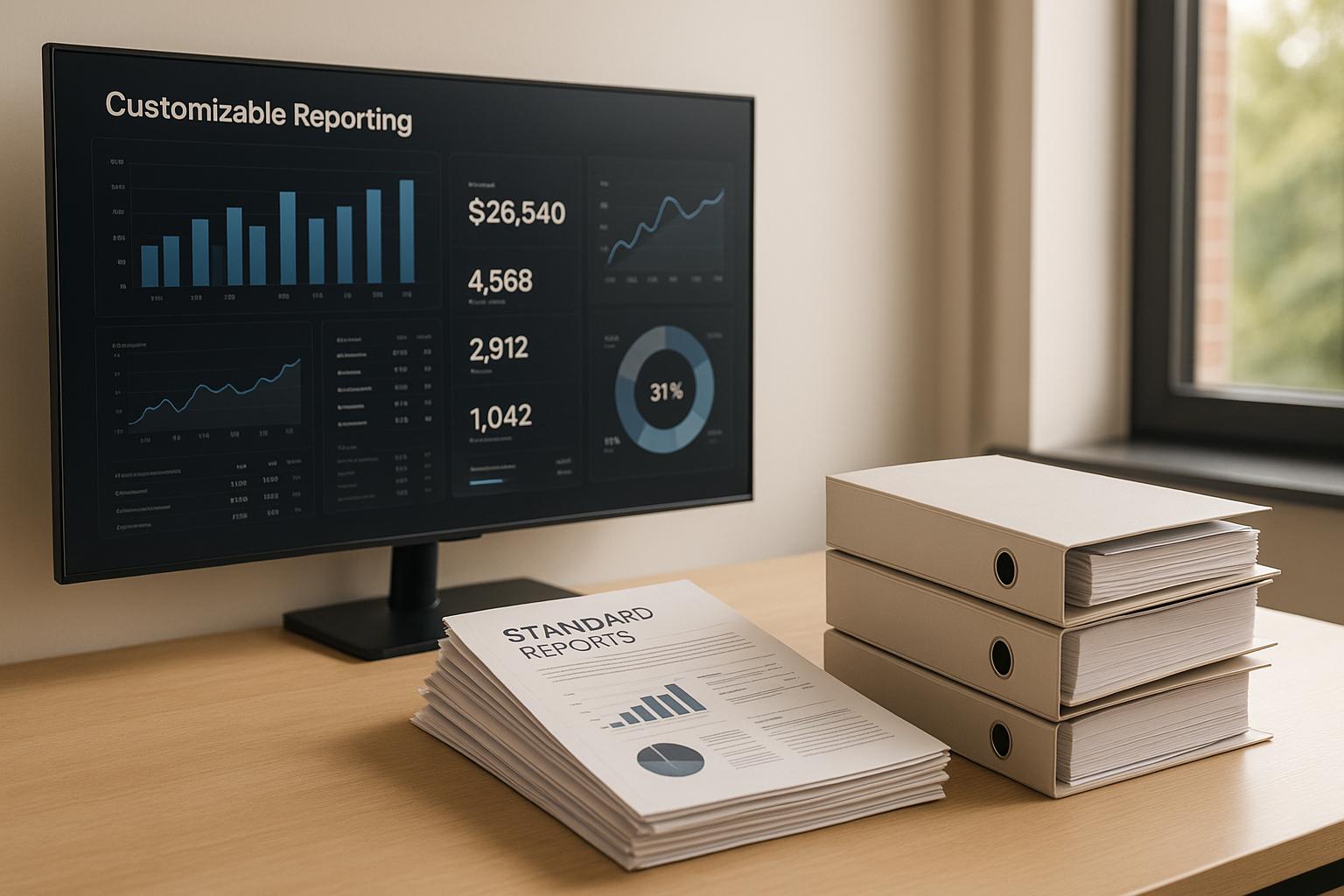How to Negotiate Supplier Payment Terms

Negotiating supplier payment terms is essential for managing cash flow, fostering strong partnerships, and ensuring your business remains financially flexible. By securing longer payment terms, like moving from Net 15 to Net 30, you gain extra time to collect revenue before paying suppliers. This is especially important in today’s unpredictable economy, where 55% of B2B invoices are overdue, and businesses face rising costs and tight margins.
To succeed in negotiations:
- Understand payment terms: Common options include Net 30, Net 60, and Net 90. Each offers varying levels of flexibility and supplier acceptance.
- Prepare thoroughly: Review your financial metrics (e.g., Days Payable Outstanding) and research industry standards to set realistic goals.
- Use smart strategies: Time negotiations well, offer gradual adjustments, and demonstrate your reliability through consistent payment history.
- Track and manage agreements: Document all terms clearly, monitor compliance, and maintain open communication to handle disputes.
Understanding Supplier Payment Terms
What Are Supplier Payment Terms?
Supplier payment terms outline the specifics of when, how, and under what conditions you pay for goods or services. Common examples include Net 30, Net 60, and Net 90, which represent the number of days you have to make a payment after receiving an invoice. Of these, Net 30 is particularly popular because it provides a balance between giving suppliers timely payments and offering buyers some breathing room.
Other terms you might come across include Cash in Advance, where payment is made upfront before goods are delivered, and Cash on Delivery (COD), which requires payment at the time of delivery. For larger or more complex projects, suppliers may use progress payments, dividing costs into installments based on milestones. Some suppliers also offer early payment discounts, where you can save a percentage of the total invoice - say, by paying within 10 days instead of the full 30.
How Payment Terms Affect Cash Flow
Payment terms play a key role in managing cash flow. Longer terms essentially act as an interest-free loan, giving you more time to hold onto your cash. This flexibility is especially important when you consider that nearly half of invoices issued by small businesses are paid at least two weeks late [2].
For instance, extending payment terms from Net 15 to Net 30 gives you extra time to collect revenue from customers before you need to pay your suppliers. This added breathing room can help keep operations running smoothly. However, it’s worth noting that longer payment cycles can slow down financial velocity, as the gap between purchasing and paying widens. On the flip side, when suppliers offer extended terms, it frees up capital that can be used for growth, purchasing inventory, or maintaining a financial safety net.
Matching Payment Terms to Business Needs
The right payment terms for your business depend on your cash flow cycle and operational goals. For example, a retail business with quick inventory turnover might find Net 30 terms manageable. On the other hand, a manufacturing company with a lengthy production cycle might need Net 60 or Net 90 terms to better align payments with revenue generation.
It’s also important to consider your suppliers. Long-standing vendors may be more flexible, while newer or smaller suppliers might prefer quicker payments. The type of goods or services you’re purchasing also matters - critical materials or specialized services might require different terms than routine supplies.
| Payment Term | Best For | Impact on Cash Flow |
|---|---|---|
| Net 30 | Everyday operations; trusted suppliers | Provides moderate flexibility; commonly accepted |
| Net 60 | Businesses with slower revenue cycles | Offers extra working capital; may need supplier approval |
| Net 90 | Large-scale orders; strategic relationships | Maximizes cash flow; less frequently offered |
| COD | New or high-risk suppliers | Immediate payment; reduces supplier risk |
The goal is to align payment terms with your cash flow needs while maintaining strong supplier relationships. Regularly reviewing and adjusting these terms ensures they stay in sync with your current financial situation and market conditions. This balance not only supports your cash flow but also builds the foundation for smoother negotiations and sustainable partnerships.
Preparing for Supplier Negotiations
Getting ready for payment term negotiations requires careful planning. Suppliers that walk into these discussions with solid data, organized documentation, and a clear understanding of their financial health are far more likely to secure favorable agreements. Preparation can often mean the difference between a flat-out rejection and reaching a deal that works for both sides.
Review Your Business's Financial Position
Before sitting down to negotiate, take a close look at your financial metrics. Key areas to assess include your operating cash flow, Days Sales Outstanding (DSO), working capital, cash conversion cycle, and Days Payable Outstanding (DPO). These numbers give you a clear picture of your financial position and your leverage in the negotiation.
For instance, if your DSO hovers around 45 days but you’re paying suppliers on Net 15 terms, it could signal an opportunity to negotiate more favorable terms. However, if your DPO indicates you’re already delaying payments beyond agreed terms, you’ll need to address this first. Suppliers monitor payment behaviors closely, and a history of late payments could weaken your negotiating position. Once your financial standing is clear, the next step is to gather relevant industry data.
Collect Data and Research Industry Standards
Understanding the standard payment terms in your industry helps set realistic expectations. For example, in the United States, 60% of invoices are paid late[1], which highlights the common challenges suppliers face when it comes to delayed payments.
Payment terms can vary widely by industry. Construction companies, for instance, often work with 90-day terms, while retail businesses might operate on immediate to 3-day cycles. Professional services may extend payment terms to around 75 days, and transportation businesses can range anywhere from 30 to 120 days. If your current payment practices differ significantly from these norms - say, you’re operating on Net 15 terms in an industry where 90 days is common - you can use this as leverage during discussions.
You can also tap into resources like trade publications, industry associations, or financial databases, which often publish surveys on payment terms. Some accounting software platforms even provide anonymized benchmarking data, showing how similar businesses manage their supplier relationships. Armed with this knowledge, you’ll be better equipped to back up your requests.
Prepare Supporting Documentation
Solid documentation is essential for building a persuasive case. Suppliers are more likely to consider changes to payment terms when your request is backed by clear, well-organized information. Start by summarizing your payment history with the supplier. If you’ve consistently paid on time - or even ahead of schedule - highlight that to demonstrate your reliability.
Include financial forecasts and past cash flow statements to show how extended terms could support your growth. If your business experiences seasonal fluctuations, explain how longer payment terms would help smooth out those cycles. Metrics like your accounts payable turnover can also showcase how efficiently you manage payments.
Additionally, consider preparing a brief overview of your business. Highlight your growth trajectory, market position, and future plans to reassure suppliers that your company is stable and growing - not struggling with cash flow issues. Finally, gather insights on competitor terms through industry contacts, trade associations, or events. Knowing what terms other businesses in your sector receive can help you frame your request within reasonable boundaries.
Negotiation Strategies for Better Payment Terms
Once you've done your homework, it's time to put your preparation into action. These strategies are designed to help you secure better payment terms while maintaining strong supplier relationships.
Time Your Negotiations Wisely
Timing is everything when it comes to negotiations. Aim to negotiate during periods of stable cash flow. This allows you to present your request as a calculated, forward-thinking decision rather than a reaction to financial strain.
Start building rapport with your vendors well before you need changes in payment terms. For example, if you foresee needing extended terms in the future, open the conversation early. This gives both sides ample time to explore options that work for everyone. When forming new supplier relationships, address payment terms early in discussions, alongside details like pricing and delivery schedules.
Make Gradual Adjustments
Instead of pushing for dramatic changes, aim for small, manageable improvements. For instance, if your current terms are Net 15, request an extension to Net 30 as a starting point. Once you've proven your reliability by consistently paying on time under the new terms, you can revisit the discussion for further adjustments.
This step-by-step approach not only strengthens trust but also aligns payment schedules with your cash flow needs. It's especially beneficial for smaller businesses, as steady order volumes and dependable payments can build leverage over time, positioning you for even more favorable terms.
Offer Value in Exchange for Better Terms
Show your suppliers the value your business brings to the table. Consistent order volumes and a history of timely payments demonstrate reliability and predictability - qualities that can make your case for extended terms much stronger.
Additionally, being proactive in your communication is key. Start renegotiations before any issues arise. This helps maintain a strong relationship with your supplier and encourages flexibility when adjustments are needed.
sbb-itb-e766981
Comparing Payment Term Options
Once you've prepared your negotiation strategies, the next step is to compare payment term options. This process helps you make decisions that align with your cash flow needs while maintaining strong supplier relationships. Each payment term comes with its own set of advantages and drawbacks, so understanding them is key to making informed choices.
Compare Common Payment Terms
Payment terms differ in structure and flexibility, and choosing the right one depends on your business needs and industry practices. Net 30 is the most common term, offering a balanced approach that works for many businesses. However, alternatives like Net 60 or Net 90 provide longer payment windows, which can ease cash flow pressures but may not be as widely accepted by suppliers.
| Payment Term | Description | Pros | Cons |
|---|---|---|---|
| Net 30 | Payment due 30 days after invoicing | Standard practice; moderate flexibility; encourages timely payments | Limited cash flow extension; may not suit seasonal businesses |
| Net 60 | Payment due 60 days after invoicing | Offers more time for payment processing; improves cash flow | Less common; may strain supplier relationships |
| Net 90 | Payment due 90 days after invoicing | Provides maximum payment flexibility; ideal for long production cycles | Rarely accepted; higher risk of late payment fees |
| Cash in Advance (CIA) | Payment required before work begins | Eliminates supplier credit risk entirely | Requires upfront funds; ties up working capital |
| Cash on Delivery (COD) | Payment due upon delivery | Ensures immediate payment | Demands immediate cash availability; limits flexibility |
Another option to consider is early payment discounts. These arrangements encourage prompt payments and can help improve cash flow while keeping suppliers satisfied.
Review Impacts on Cash Flow and Supplier Relationships
Your choice of payment terms has a direct impact on both cash flow and supplier trust. While extended payment terms give buyers more working capital, they can create challenges for suppliers who rely on timely payments to operate smoothly.
For example, 25% of small businesses report experiencing 30-day payment delays, which can damage supplier trust. Additionally, 92% of business owners admit to paying suppliers late, which can lead to penalty fees and strained relationships. Suppliers who frequently face late payments may respond by shortening terms, requesting deposits, or reducing service levels.
On the other hand, businesses with a solid payment history often benefit from better terms and priority service, particularly during supply chain disruptions. Maintaining clear communication and honoring agreed terms are essential to building trust and avoiding operational hiccups.
Cash flow stability also depends on the payment terms you choose. While Net 90 provides the most flexibility, it can create a long gap between expenses and revenues, which might be risky during economic downturns or unexpected challenges. Industries with long production cycles, such as manufacturing, might find extended terms more practical, whereas service providers typically expect faster payments like Net 30.
Lastly, consider how extended payment terms might affect your working capital. Delayed payments can limit your ability to invest in growth opportunities or new equipment. To strike the right balance, segment your suppliers strategically - pay critical vendors promptly while negotiating more lenient terms with less essential ones. This approach ensures your cash flow remains healthy without compromising supplier relationships.
Managing and Monitoring Negotiated Terms
Securing favorable payment terms is just the beginning; managing and monitoring those terms is where the real work begins. Without proper implementation and oversight, even the best-negotiated agreements can falter, leading to confusion, disputes, and strained supplier relationships.
Document and Formalize New Agreements
Putting your negotiated terms into writing is crucial to avoid misunderstandings and ensure both parties are on the same page. Relying on verbal agreements can lead to complications, especially when payment deadlines approach or personnel changes occur.
Start by updating supplier contracts to include the newly negotiated terms. Be specific - state payment due dates, early payment discount percentages, and penalties for late payments. For example, if you’ve agreed on a 2% discount for payments made within 10 days, make sure the contract clearly outlines that the discount applies only to invoices paid by the 10th day.
To streamline future negotiations, consider creating a standardized master agreement template for payment terms. This not only simplifies the process but also ensures consistency in your accounts payable practices.
For temporary adjustments, use email confirmations to document the agreed changes. Take inspiration from a case study by BCG, where a global chemical company in North America extended payment terms by up to 60 days with 200 suppliers, achieving a 55% acceptance rate. Clear written communication, like email confirmations, ensures that both parties understand and agree to the revised terms.
Don’t forget to update your accounting systems to reflect the new agreements. Configuring your accounts payable software to automatically apply the correct payment schedules and discount calculations minimizes errors and keeps processes consistent. Proper documentation and system updates are key to safeguarding the benefits of your negotiations while supporting your cash flow strategy.
Track Compliance and Make Adjustments
Keeping tabs on payment performance allows you to catch potential issues before they grow into bigger problems. Effective tracking involves more than just recording payment dates - it requires analyzing patterns and ensuring adherence to the agreed terms.
Set up automated reminders in your accounting system to notify you as payment deadlines approach. Many businesses struggle to meet deadlines consistently, which can damage the goodwill established during negotiations. Regularly reviewing your cash flow forecasts can help you ensure that your payment terms remain practical and aligned with your financial position. If you notice frequent delays in meeting deadlines, address the root causes promptly.
Measure key performance indicators like average payment time, the percentage of invoices paid on time, and the amount saved through early payment discounts. Sharing positive metrics with suppliers during relationship reviews can reinforce your commitment to the partnership and build trust.
Handle Disputes and Maintain Relationships
Even with clear documentation and diligent tracking, disputes can arise. Addressing them quickly and professionally is essential to maintaining strong supplier relationships.
When issues occur, tackle them head-on. As Stephanie Sims, Founder of Finance-Ability, advises:
"Fair warning is always better than surprising a vendor by saying 'I can't pay.' If you know that you can't make payments in a timely fashion, reach out to your vendor sooner rather than later. Don't wait until you're already 30 days late to start the conversation!"
If financial challenges arise, communicate openly with your suppliers and propose practical solutions, like partial payments or temporary extensions. Suppliers often value transparency and a collaborative approach to resolving issues.
For more complex disputes, consider alternative resolution methods such as mediation or arbitration. These approaches can help settle conflicts without damaging long-term relationships. Always document discussions through email confirmations to create a clear record and avoid future misunderstandings.
Regularly scheduled relationship reviews with key suppliers can also help prevent disputes. Use these meetings to discuss payment performance, any upcoming changes in your business, and potential adjustments to terms. This proactive approach strengthens partnerships and keeps communication lines open.
[1] BCG Publications, 2024
Key Takeaways for Successful Negotiations
Mastering supplier payment term negotiations requires a careful balance between meeting your financial needs and nurturing strong supplier relationships. Success hinges on thorough preparation, the right mindset, and skillful execution.
Lay a strong foundation. As Philip Ideson says:
"Successful supplier negotiations require more than just tactics - they demand the right mindset, thoughtful preparation, and a clear understanding of strategic objectives and supplier dynamics."
This means diving deep into your cash flow needs and defining payment terms that align with them. Set clear objectives before initiating any discussions.
Focus on high-impact opportunities. Once prepared, prioritize negotiations with suppliers where the financial stakes are highest. For new suppliers, establish payment terms at the beginning of the relationship. This proactive step ensures smoother operations and gives you greater control over future interactions.
Be transparent and collaborative. Strong supplier relationships are built on mutual trust and shared benefits. Be upfront about your payment capabilities and any challenges your business faces. Explaining how flexible terms support mutual growth fosters trust and often leads to creative, win-win solutions.
Stay adaptable and offer trade-offs. Consider offering early payment discounts, volume incentives, or long-term contracts in exchange for more favorable terms. As Chris Voss puts it:
"Successful negotiation is about creating opportunities to influence and win allies."
Think beyond the immediate. Aim to build lasting partnerships with suppliers that not only support your current cash flow but also contribute to long-term growth.
The financial rewards of negotiating favorable payment terms are significant. Aligning payment schedules with your cash flow reduces reliance on borrowing, preserves cash, and improves financial stability. These benefits strengthen your overall cash flow strategy and supplier management efforts.
For businesses navigating complex financial relationships, partnering with experienced financial advisors can be a game-changer. Phoenix Strategy Group offers fractional CFO services and financial advisory support to help growth-stage companies manage cash flow effectively and prepare for future opportunities.
FAQs
How can I negotiate extended payment terms without damaging supplier relationships?
Balancing extended payment terms with strong supplier relationships hinges on open communication and mutual understanding. Begin by clearly explaining why you’re requesting longer terms, making sure to highlight how this change could benefit both sides. Be upfront about your financial position and propose terms that are both fair and achievable.
To maintain trust, it’s crucial to consistently meet the deadlines you agree upon and stay in regular contact with your suppliers. Showing reliability and goodwill can go a long way in strengthening the partnership, even while negotiating new payment schedules. A collaborative mindset often leads to solutions that satisfy everyone involved.
What are common mistakes businesses make when negotiating supplier payment terms, and how can they avoid them?
One mistake many businesses make during payment term negotiations is walking into discussions unprepared. This often means not fully understanding their own financial requirements or the limitations faced by the supplier. The result? Payment terms that might clash with their cash flow needs. Another common error is overlooking the importance of trust and open communication with the supplier, which can make it harder to reach a collaborative agreement.
To steer clear of these issues, take the time to carefully assess your financial situation and gain insight into the supplier's priorities. When you approach negotiations, aim to establish terms that benefit both sides. Maintaining clear, respectful communication can help build trust, setting the stage for a successful and balanced agreement.
What are common payment terms in different industries, and how can I use this knowledge to negotiate better terms with suppliers?
Payment terms can differ significantly depending on the industry, the size of the transaction, and your relationship with the supplier. Common examples include Net 30 (payment due in 30 days), Net 60, or arrangements like 2/10 Net 30, where you get a 2% discount for paying within 10 days. These standard terms provide a starting point for negotiations.
Knowing the typical payment practices in your industry is key to setting practical expectations and spotting chances for better terms. For instance, you might aim for longer payment periods to ease cash flow or negotiate early payment discounts to trim expenses. Adjusting your approach to align with both the supplier's preferences and your financial objectives can lead to agreements that benefit both parties and give your business more financial breathing room.




